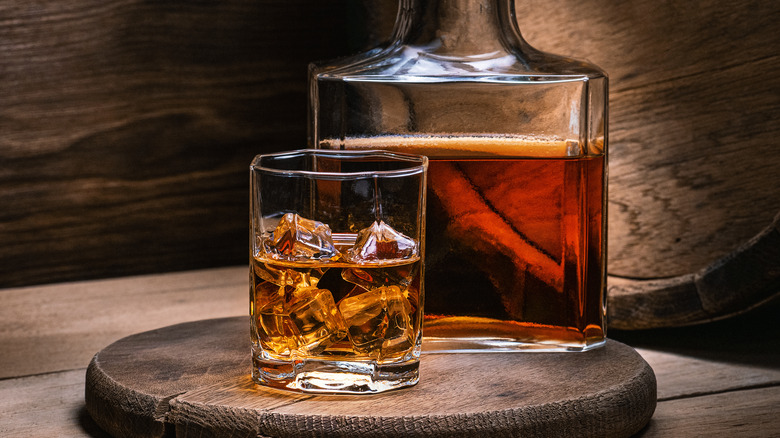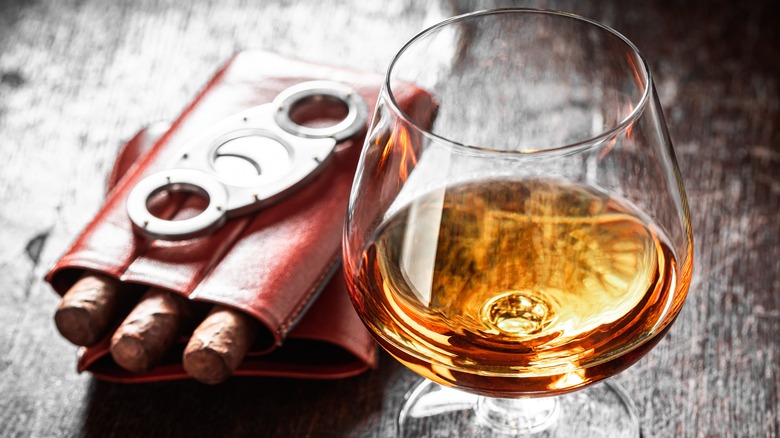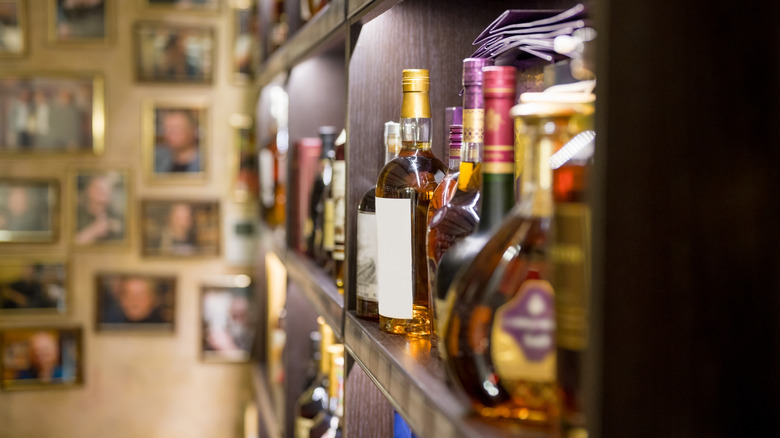How To Store Your Whiskey Like A True Connoisseur
Whiskey (or whisky) is a versatile spirit that comes in various styles and types. Whether neat, on the rocks, or in a favorite cocktail, one can't go wrong with a nice bourbon, rye, or scotch. However, not many people know how to properly store their alcohol, which is just as important as presentation or variety. After all, whiskey can degrade if not kept correctly, and this can ruin a collector's good investment, especially if it's a pricey brand. Best practices suggest keeping your favorite bottles away from light as much as possible, preferably in a cool place, sitting upright.
While there are several aspects — illumination, temperature, and alcohol content – to consider when determining the best way to stash your favorite liquor, it's not as convoluted as one might think. Still, it's necessary if the goal is to keep the quality near what it was when the bottle was first brought home and opened. As whisky expert Nate Ganapathi writes for Food & Wine, "It's worth taking a few extra steps to get the most out of those precious bottles."
How to avoid angel's share
Preserving whiskey is a lot like stowing away cigars for later enjoyment. As a result, darkness, stable temperatures, and limiting air exposure all play a part when safeguarding the spirit. For instance, when subjecting a bottle to direct sunlight, the whiskey's molecular structure degrades, leading to evaporation and a loss of alcohol content — also known as the "angel's share," since it dissolves into the proverbial ether.
This is especially noticeable when a liquid's components, like alcohol, disappear due to its environment's high breathability, which allows the vapors to escape and the air to affect the beverage's overall character. Consequently, it's important to store whiskey in a secure container placed inside a consistently cool, dark place (at around 55 to 60 degrees Fahrenheit). This not only slows down the natural aging process but also protects the color and proof during long periods of non-consumption. Not everyone has access to a cellar or basement, though, so a fridge may be acceptable if the conditions are appropriate.
Another thing to consider, after a few drinks, is that there's now more space in the bottle. This unfortunately leads to increased air contact and oxidation, which lessens whiskey's aroma and flavor. So, it would be in one's best interest to transfer the remaining spirit into a smaller, closed container, like a decanter, to minimize any empty room and decrease the chances of further degradation.
Bottle orientation is also important
Whichever types of whiskey are being stored, the placement of your bottles is also essential. One way to get a feel for best practices is to see how bottles are kept at your local bar. Most will note that wine is often laid on its side to ensure the cork stays moist, which helps prevent spoilage by limiting the amount of air that makes its way inside. This is because wine has a lower alcohol content than spirits, so the beverage has more water. As a result, it's okay to store a wine bottle that way, because contact with the watery beverage keeps the cork from drying out. However, that isn't the case with higher-proof spirits like whiskey. It's quite the opposite.
A higher proof equates to more alcohol, which can erode the cork. Thus, prolonged exposure to a bottle's contents will disintegrate the integrity of the stopper and eventually let in more air, so this should be avoided. As such, the best places for your favorite whiskey include a closable liquor cabinet or a shelf in a home bar that allows for an upright position; it should also restrict contact between the bottles (so labels don't wear off) and avoid any bright lights or extreme temperatures.
Once those conditions are met, all that's left is to crack open your preferred whiskey and enjoy!


